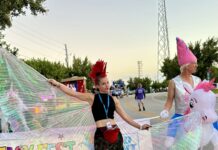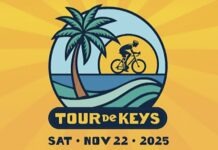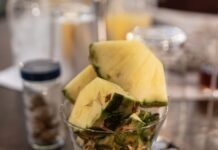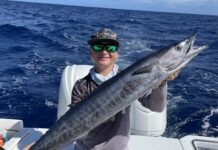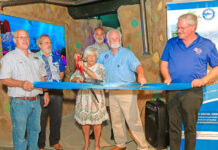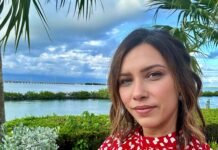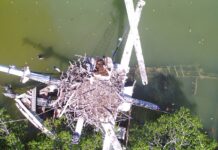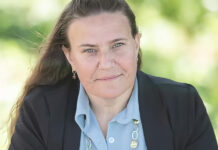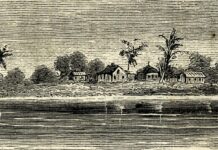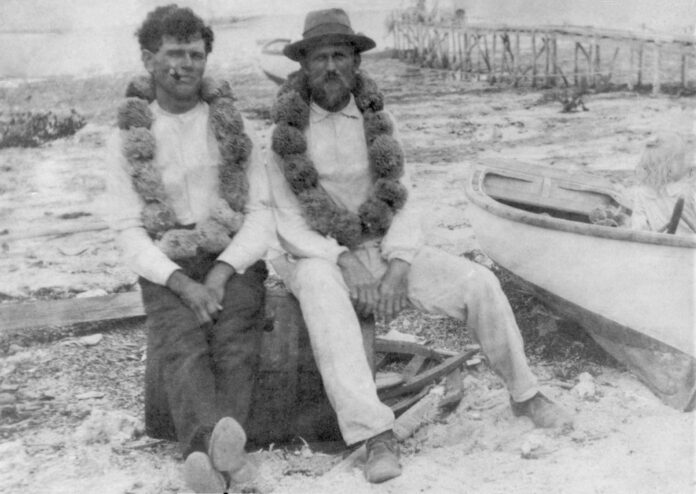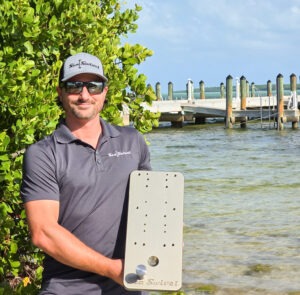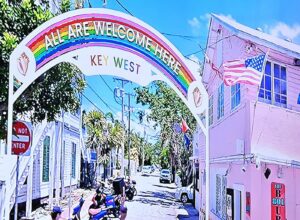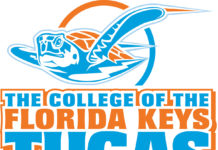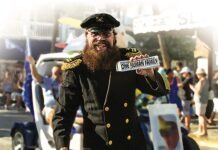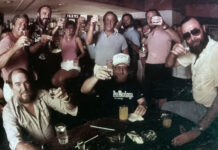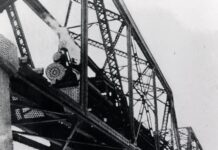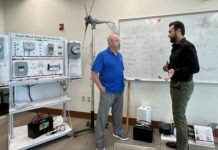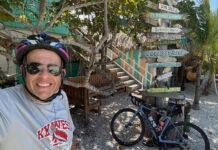The island is called Plantation Key because of the farming that once happened here. It started with pineapples planted by Capt. Ben Baker and his sons. They are considered the first to operate a pineapple plantation in the Keys.
In the late 1850s, they developed fields on Key Largo and Plantation Key. The Bakers weren’t the only farmers on the island; more about that in a bit.
I have a special place in my heart for Plantation Key. It is where I rented my first apartment when I moved to the Keys in the summer of 2001. The island has been home ever since. When people ask where I live, sometimes I say Tavernier and sometimes Islamorada. Both are true. The island has one foot in Tavernier and the other in Islamorada. Along with Windley Key, Upper Matecumbe Key and Lower Matecumbe Key, it is one of the “Village of Islands” under the Islamorada umbrella. However, according to the post office, a generous swath of the island falls under a Tavernier postal address.
On Plantation Key, too, after the Overseas Highway travels down the length of Key Largo and rolls over the Tavernier Creek Bridge, it narrows down to the one-lane road travel writers talk so glowingly about.
While much of Plantation Key is residential, a collection of interesting tidbits are clustered around MM 87. It starts where the sprawling Founders Park appears on the right. Today, the park is home to ball fields, a small crescent beach, a boat ramp, tennis courts and an Olympic-sized swimming pool that is free for Islamorada residents but requires an entrance fee for visitors.
Rumor has it that back in the 1940s, when it was developed into a marina, it was associated with men who had ties to the mob. In some old stories about those days, names like Meyer Lansky and Lucky Luciano are brought into the conversation. I’m looking forward to digging a little deeper into that aspect of the Plantation Key story.
Before the mob did or did not poke its fingers into the property, it was home to farm fields. I’m not sure if the Bakers were growing pineapples on this part of the island, but Johnny “Brush” Pinder was growing limes, tomatoes, melons and more. The Pinder homestead stretched from the ocean to the bay and included what is now the park; the Pinder house was built down by the water on the Atlantic side of the island.
It was not just farming at the Pinder homestead; a little shipbuilding was happening, too. Outside of Key West, there was not a great deal of that up and down the island chain. Plantation Key is one of a handful of islands where boats were built. We aren’t talking about dozens of ships, but a few.
One of them was a 60-foot schooner built circa 1902 on the Atlantic shoreline near where Pinder’s house once stood. Before it launched, the schooner was christened Island Home. Not only was it used to ship the fruits of Pinder’s labor to Key West and Miami, the Island Home transported everyday goods like sugar and coffee, mail, friends and family.
Before the railroad arrived, the Island Home connected Plantation Key and other Upper Keys communities to the outside world. The schooner likely served as the namesake for the Islamorada town site established a few years later. According to William J. Krome, an engineer working for Henry Flagler who established Islamorada circa 1906, the Spanish word translated into English as island (isla) and home (morada).
Beyond the park, a lot is going on in the immediate area, and of particular note are these three things: a hurricane house, a castle and a giant lobster. On the other side of the highway, on the left, down by the Old Road, stands one of the 28 “hurricane-proof” houses constructed by the Red Cross. The Old Road was the original route of the Overseas Highway when it opened in 1928. On Plantation Key, much of it is still an operable road. The hurricane house was built for Pinder and his family after the 1935 Labor Day Hurricane. It is painted yellow and green.
Just down the Old Road from the hurricane house stands a castle that was built circa 1949 to house treasures of the wrecked Spanish 1733 treasure fleet salvaged by Art McKee. McKee is remembered as the father of modern-day treasure hunting. His old building has been home to a few things since the museum closed.
A collection of roadside shops known as Treasure Village opened. In an effort to draw attention to the shops, a big lobster was brought in. It took Marathon artist Richard Blaes five years to create the 40-foot-long and 30-foot-high piece of art. It is the world’s largest anatomically correct Caribbean spiny lobster and draws considerable attention.
When the shops closed and the Treasure Village Montessori School that calls the castle home today opened, Betsy was moved to the other side of the highway. Betsy is the big lobster’s name. If you pull over and take a picture with Betsy (at some point, it seems like everybody does), you can check out some local art at the Rain Barrel where Betsy is standing. It is quite possible that the only Florida Keys icon more photographed than Betsy is the Southernmost Point, but that is still more than 80 miles away, and there is so much more to talk about before we get there.
In 2025, I’ll be exploring the Overseas Highway, its history, attractions, and points I find interesting.

